In a rare outburst of unity, the Senate recently voted unanimously for a dress code. The motion had come in response to Pennsylvania Senator Fetterman showing up in the chamber wearing shorts and a hoodie. His attire was similar to what millions of his constituents might wear, but it did not fit with the “decorum, conduct, and civility” of the Senate, in the words of West Virginia Senator Joe Manchin.
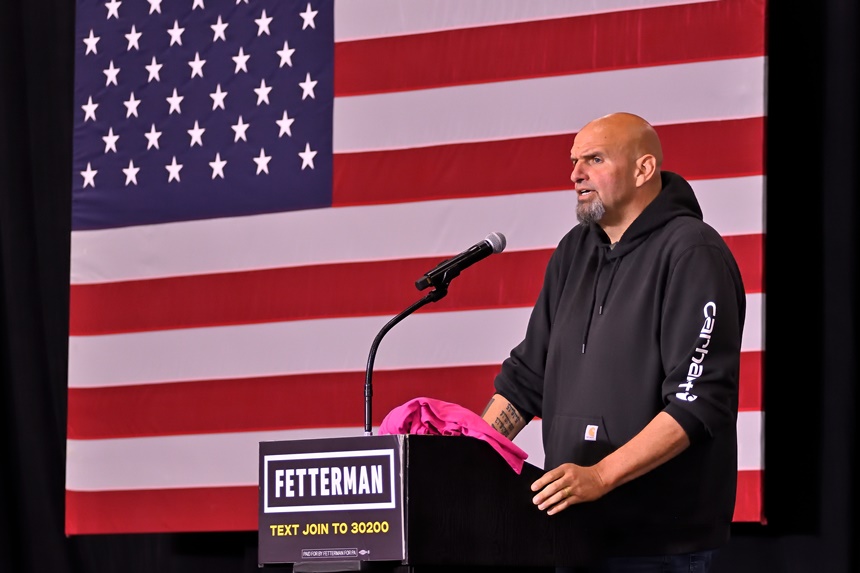
The new dress code directed men in the Senate to, forthwith, wear “a coat, tie, and slacks or other long pants.” (No code was established for the 25 senators who were women.)
It’s ironic that a country whose wardrobe continually grows more casual should insist on business attire for its government, that a t-shirt-and-cutoffs nation should be represented by Windsor knots and four-button cuffs.
At one time, American businesses insisted its employees wear neckties and long-sleeve shirts, skirts and stockings. Back in the 1900s, other than farmers and manual laborers, all working men — bankers, lawyers, salesmen, accountants, politicians — basically dressed alike. They wore coats of heavy wool or gabardine in somber colors, long-sleeve shirts with rigid, detachable collars, ties, and vests. They wore this outfit throughout the day, even when relaxing at home, though a man with a broad-minded wife might be allowed to remove his jacket and lounge in his shirt sleeves in her presence.
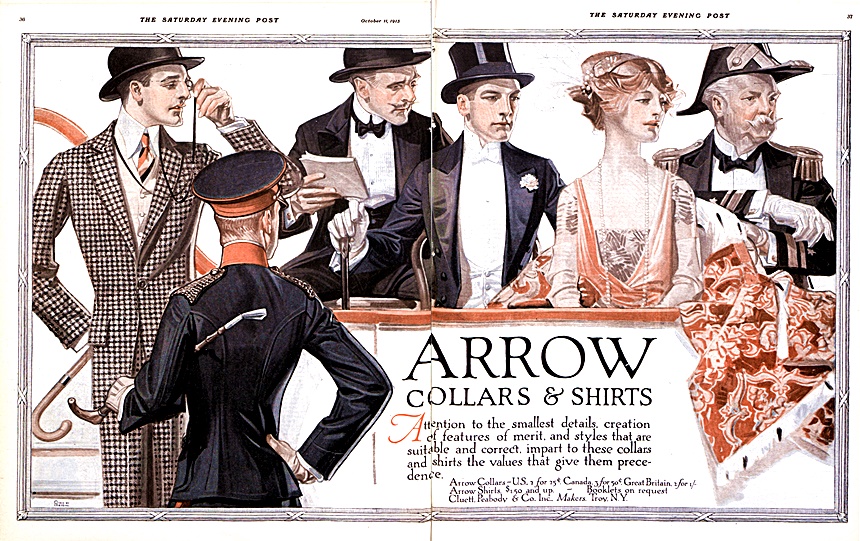
But that dress code has relaxed considerably in the 20th century. Today, about 80 percent of Americans wear business-casual or casual attire at their workplace. Twenty percent say their workplaces have no dress code at all.
Today’s Americans definitely prefer comfortable, informal clothes. Most of us now regularly wear jeans. Over 30 percent wear them daily. And every year, Americans purchase two billion t-shirts. That’s six for every man, woman, and child. Sixty-four percent wear sports clothes and sports shoes in everyday life; only 25 percent of running shoes are actually used for running.
Neckties are so rarely worn, wrote Peter Coy in the New York Times, that “even articles about neckties going out of fashion have gone out of fashion.” Some people argue that they should be done away with for good.
When did this shift from business to casual dress start? Beginning in the 1920s, a number of factors caused men to slowly abandon formal attire.
Hollywood
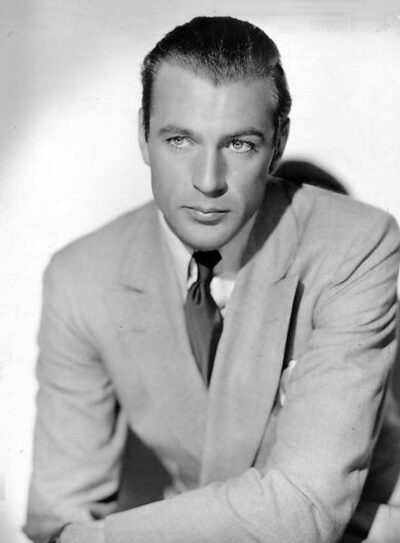
For years, European nobility set the fashions for American men. But after the First World War, most of Europe’s nobles were fading into obscurity. Americans were now getting new ideas about style from movies. Men were switching to suits in lighter material and lighter colors. Many adopted the double-breasted coat that accentuated broad American shoulders. And they began discarding their traditional straw hats for rakish fedoras.
Sports
A 1924 Post editorial observed that American men had become sports fanatics. If they weren’t watching or reading about sports, they were playing sports themselves. Athletes who played tennis or polo naturally wore sports-specific clothing on the playing field. But now, spectators in the stands, including men who had never played a sport, were wearing tennis sweaters or polo shirts.
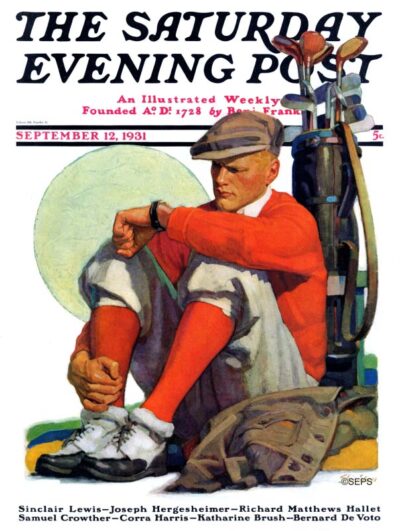
Traditional business suits made no allowances for athletic builds. Men who exercised regularly found them uncomfortably restricting. They asked tailors to make more room in the shoulders and arms for greater range of motion. The hard, detachable collars that dug into the neck were replaced by soft collars. Comfort became as important as elegance.
Shorts
When British soldiers in the tropics began wearing short pants, the fashion was picked up by Americans, though some cities and states prohibited wearing them in public. They were particularly popular on college campuses. In 1930, 600 students at Dartmouth College wore their shorts onto campus to, as the student paper put it, “lounge forth to the supreme pleasure of complete leg freedom.” The alumni magazine reported as late as November they were still a common sight on campus.
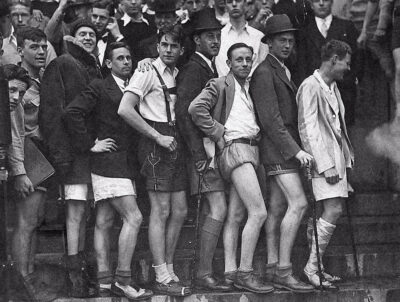
The Great Depression
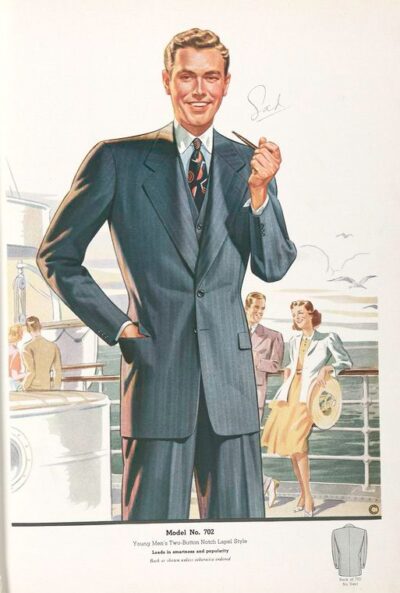
Men’s fashions changed again in the 1930s. Suits were reshaped to emphasize the male figure. Shoulders were padded, trousers were pleated, and coats were tapered to enable men to present a relaxed, confident image, even if they didn’t feel it.
Unemployed office workers saw little reason to continue wearing business attire. They switched to casual clothes, choosing outfits that were comfortable, durable, and affordable. They could balance the wear on their clothes by wearing coats and pants that didn’t match.
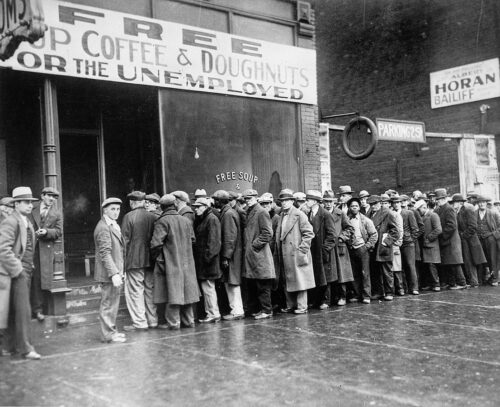
Postwar
In the late 1940s, millions of American men released from military service were glad to get out of uniform. Civilians once again, they might still wear a suit to the office, but were more likely to change into casual wear when they got home. There were lots of choices in the inexpensive, colorful clothing made from the new, lightweight, synthetic fabrics.
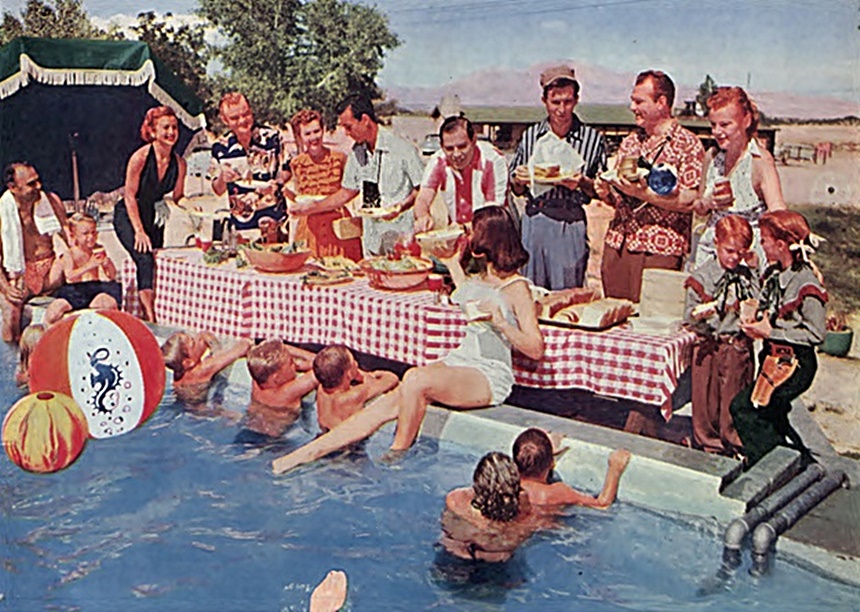
Casual Fridays
In the 1960s, Hawaiian businesses started a tradition of wearing Hawaiian (or “Aloha”) shirts on Friday to promote Hawaiian culture. The tradition spread to California and was adopted at Hewlett-Packard, which permitted employees to dress more casually on Fridays when they worked on new ideas.

The New Corporate Culture
The young visionaries and entrepreneurs who launched the digital revolution were focused on function, not form, on computer codes, not dress codes. It wasn’t unusual for them to work 80 hours a week and dress for work based on what was comfortable and close at hand. Today, tech workers have generally adopted the minimalist fashion sense of Steve Jobs and Mark Zuckerberg. Many more traditional business have followed.

Covid
Then came the pandemic and quarantine. Employees stayed home to work, and wore whatever they wanted. If they didn’t have to appear in a Zoom meeting, they might stay in pajamas all day.
Today, proper workplace attire is less of a concern to employers than just getting employees to show up in the office.
Become a Saturday Evening Post member and enjoy unlimited access. Subscribe now
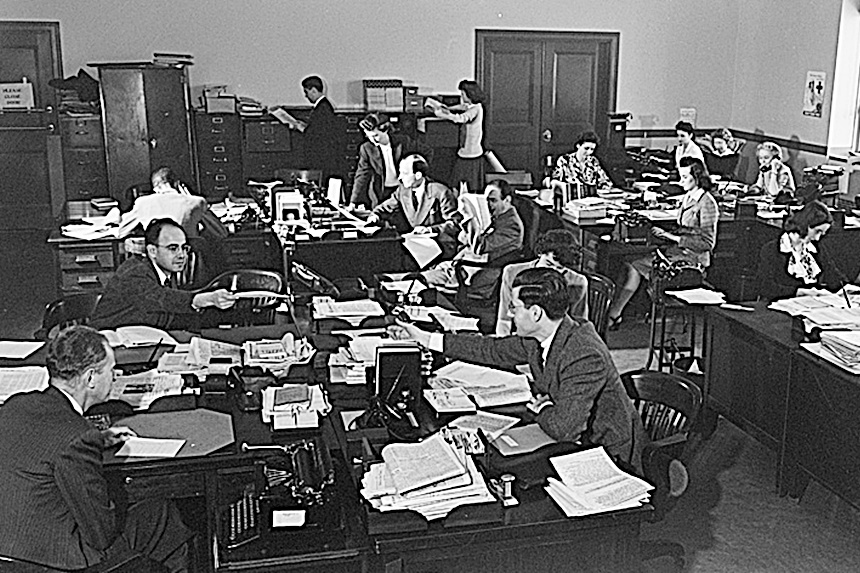


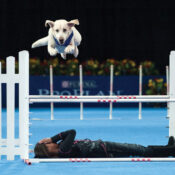
Comments
Seems like the motto has become the sloppier, more risque the more fashionable. Bare shoulders and see-thru fabrics on young women make them part of the new generation. See how daring one is to show formerly private skin, or how young men’s jeans slip down to reveal a little bit of fashionable crevasse. What defiance & independent thinkers! When buying new jeans you must specify that you want the torn, faded look! I suppose that makes you look socially aware that there are people the world over begging to have our cast-off fashions just to cover their poor, starved bodies. Illegal border crossers in Texas come here better dressed!
I was brusquely informed that I had overstepped my role as mom when I mended a visiting son’s ragged jeans and installed patches over the barren knees. Said that stylish, exasperated son, “You don’t know how long it took me to get those jeans to look that way!” “Ragged?” I queried! After that I was forever banished from mending for his generation. But as an aged rebel I still refuse to pay for worn, torn, NEW clothes.
Oh but wouldn’t it be nice if some of these men nowadays would just, “Pull up their pants”?